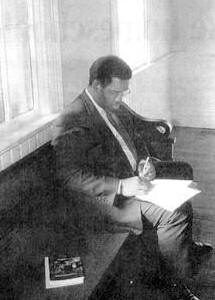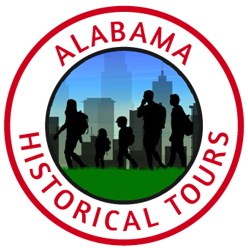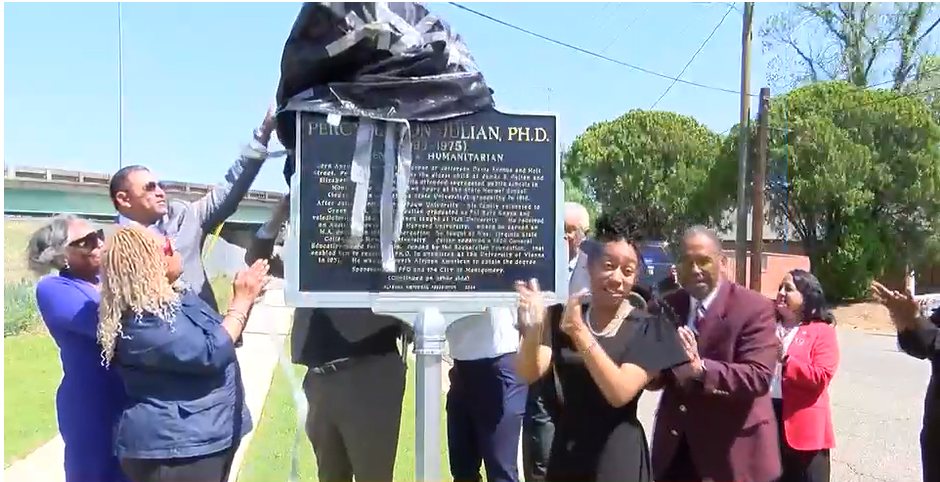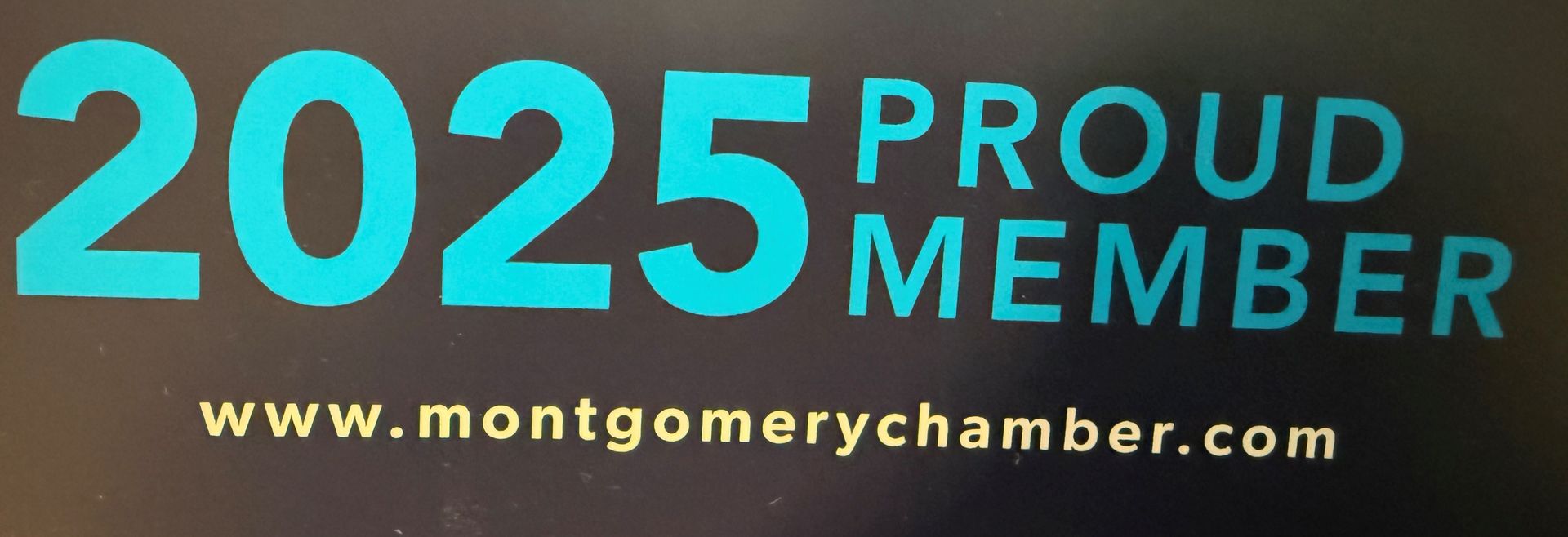Neighborhood at a Crossroads

Georgette Norman sits in front of an abandoned house along Rosa L. Parks Avenue. Not only did Norman grow up on this street, but she came back to the neighborhood in the mid-1980s and continues to live in her family’s home. She and others in the area are working to revive the neighborhood.
Historic Area looks to Return to Past Glory
By Robin Bradley Litchfield, Montgomery Advertiser
Drive through the neighborhood along Rosa L. Parks Avenue, and you’ll catch a glimpse every now and then of what was one of Montgomery’s most prominent areas for African Americans from the 1940s to the early ’70s.
But the area along Rosa L. Parks Avenue, which before its name was changed to honor the civil rights leader who lived there was called Cleveland Avenue, is just not the same.
Now visitors only glimpse the former glory of the neighborhood, which encompasses about 40 blocks from Mildred Street to Fleming Road. Vestiges of its former grandeur peek out from behind overgrown yards, tattered awnings, run down rental properties and boarded-up businesses and houses.
Older black families, many of their names prominent in the city’s history, bemoan some of the younger, newer inhabitants who do not share the working-class values that helped shape these streets.
“I’ve lived there 65 years — back then, those (West Jeff Davis and Cleveland avenues) were the best streets for blacks,” said 96-year-old Robert L. Clayton. “I had been married a short time, and wanted a home. Back then, it was a quiet neighborhood, a good place to raise a family, nothing like it is now.”
Montgomery historian Richard Bailey said the area was an important one for blacks in Montgomery.
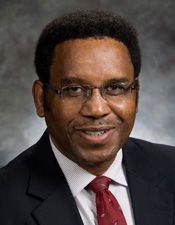
Montgomery historian Richard Bailey said the area was an important one for blacks in Montgomery.
Montgomery historian Richard Bailey said the area was an important one for blacks in Montgomery.
“It was the heart of the black community,” Bailey said, referring to a pocket bordered by Fairview Avenue to the south and West Jeff Davis to the north.
“One of the distinguishing features of that single street is that you had blue-collar as well as white-collar residents. There were many professionals, educators, doctors and business owners who lived on that street.”
Many of the Montgomery bus boycott’s leaders lived here. Parks lived in a Cleveland Court apartment, and local NAACP branch president E.D. Nixon lived a few blocks away on Clinton Street.
Originally, in the 1850s, the street was called the Plank Road, said historian Mary Ann Neeley.
“At that time, they were building the plank road going south, and it would eventually run all the way to Mobile,” she said. But the project got so expensive, it didn’t make it beyond Lowndes County.
Then in October 1887, President Cleveland and his wife came to town.
“The Montgomery papers were ecstatic about his coming. The Montgomery Advertiser’s headline was ‘Our Cleveland is coming,’ ” she said. “Montgomery was a strong Democratic town, and the state, too, for the most part. He was the first Democratic president to visit the Capital City, so it was a major event.”
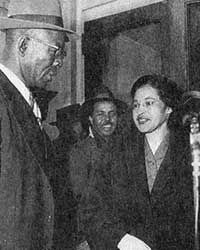
Rosa L. Parks and E.D. Nixon, former president of the Alabama NAACP, arrive at court March 19, 1956, in Montgomery. Parks and Nixon lived in the Cleveland Avenue neighborhood. Cleveland Avenue was renamed Rosa L. Parks Avenue.
Rosa L. Parks and E.D. Nixon, former president of the Alabama NAACP, arrive at court March 19, 1956, in Montgomery. Parks and Nixon lived in the Cleveland Avenue neighborhood. Cleveland Avenue was renamed Rosa L. Parks Avenue.
The day of his visit, the Plank Road was changed to Cleveland Avenue, a name which lasted about 100 years. The next name change was in March 1986, when it was changed to honor Rosa L. Parks, considered the mother of the civil rights movement.
Longtime residents still have trouble now and then not calling it Cleveland Avenue. Even retired educator Leon Williams admitted that sometimes he slips and uses the former name.
He and his late wife, Yvonne Williams, were drawn to the neighborhood in early 1948. They had just married when they purchased their house on Cleveland Avenue.
“We needed a place to live, and my wife liked it, so we decided to try to purchase it. It was much different back then. There were quite a few successful people, in terms of professionals,” said Williams, who plans to remain in his home of more than 56 years.
But by the early ’70s, as the interstate highway system cut through the area, things began to change. Bailey said. The neighborhood shifted into a downward spiral that has only worsened.
Longtime resident Georgette Norman, who grew up on the street and then returned after moving away for a number of years, said when she was growing up, there was a strong sense of community.
“It was lively, very vibrant, a community,” she said. “There were lots of young people and families, some extended families with grandmothers or aunts. Your next-door neighbor might be a sister or a brother. There was a sense of belonging and nurturing — not just from your specific household. Your neighbors could discipline you, and you listened to them.”
And there were a number of successful businesses owned by neighborhood people, such businesses as Luther Oliver’s garage, and Shaw’s Bakery, which residents smile as they recalled “the best sweet rolls in the world.”
And, Bailey said, there was the Elks Club, which still stands near the West Jeff Davis end of the street.
“The Elks Club was one of the centerpieces of old Cleveland Avenue. Many professional black people would frequent the place on weekends. There was a lot of black entertainment,” he said. “Others could go there for some of the finest food. Many, many black cooks got their start at the Elks Club, including George Gregory, who’s not around anymore.”
But when it came to entertaining, the Elks Club wasn’t the only game in town.
Many of the professionals and business owners were members of civic clubs, which blended community service and socializing.
Williams and his late wife were members of such clubs. For 49 years he has been active in the Cosmopolitans, one of the prominent black social and service clubs in the city. His wife was a Cosmopolite, the women’s counterpart.
“There was a lot of entertaining. As a matter of fact, they (the clubs) met on a monthly basis . They also chose projects in the community to work on,” Williams said.
Norman was too young to participate in one of the adult clubs, but she does remember seeing ladies dressed in their finest socializing at different houses around the neighborhood. Occasionally, it was her parents’ turn to play hosts.
A number of women were active in one of the dozen or so Montgomery City Federation of Women’s Club groups. The late Tessie Oliver Nixon (no relation to civil rights activist E.D. Nixon) was active in the Ten Times One Is Ten Club, and she often entertained in her stately white home between Clinton and Early streets.
Everybody in the community knew Nixon and her husband, Alfred Nixon, and their pet peacocks.
Other prominent residents included numerous Alabama State University professors, including the late Edgar E. Evans and Zelia Stephens Evans, the woman in whose honor the university’s early childhood center is named.
Myrtis Clayton Ramsey, daughter of Clayton and the late Janie Lowe Clayton, said living along the street back then — the only home she’s ever known — was so different.
“People cared about each other, and they cared about the way their homes and yards looked,” said Ramsey, who chose to marry in her parents’ back yard 39 years ago.
Her father agreed and said, “As bad as it looks now, it looked equally good in the heyday.”
So what happened to this thriving community? To the manicured lawns, well-kept homes, thriving businesses?
Helen Oliver, whose late husband, Luther Oliver, took over his family’s garage in 1945 and ran it until his death in 1993, said things began to change as children grew up and moved away. Then, as residents began to age and pass away, things were never the same.
Clayton said, “Back then, you could sit out on your porch step, and nobody would bother you, no riffraff back in those days.”
Norman said looking at her neighborhood’s decline saddens her.
“But I think the part that gets me is the ‘ladies of the evening.’ That’s more of a concern to me because of the kind of activity it brings with it,” she said. “And occasionally, you’ll hear gunshots.”
It also saddens her to think of countless neighborhood playmates who grew up, went away to study and never came back.
“I would love to see the houses that are vacant sold to families as opposed to just sitting there,” she said. “The houses should be sold to people who will take pride in their homes, the way it was for so long.”
Norman is not alone.
Williams and others along the street haven’t given up.
“I am still hopeful that the spirit of the old neighborhood will be relived,” he said. “Those who own property should take a little pride in what they have. Once upon a time, there was a lot of pride on this street, and people were very much concerned in what was going on. It can happen again.”
~
Montgomery Advertiser, October 24, 2004
The post Neighborhood at a Crossroads appeared first on Alabama Historical Tours.
